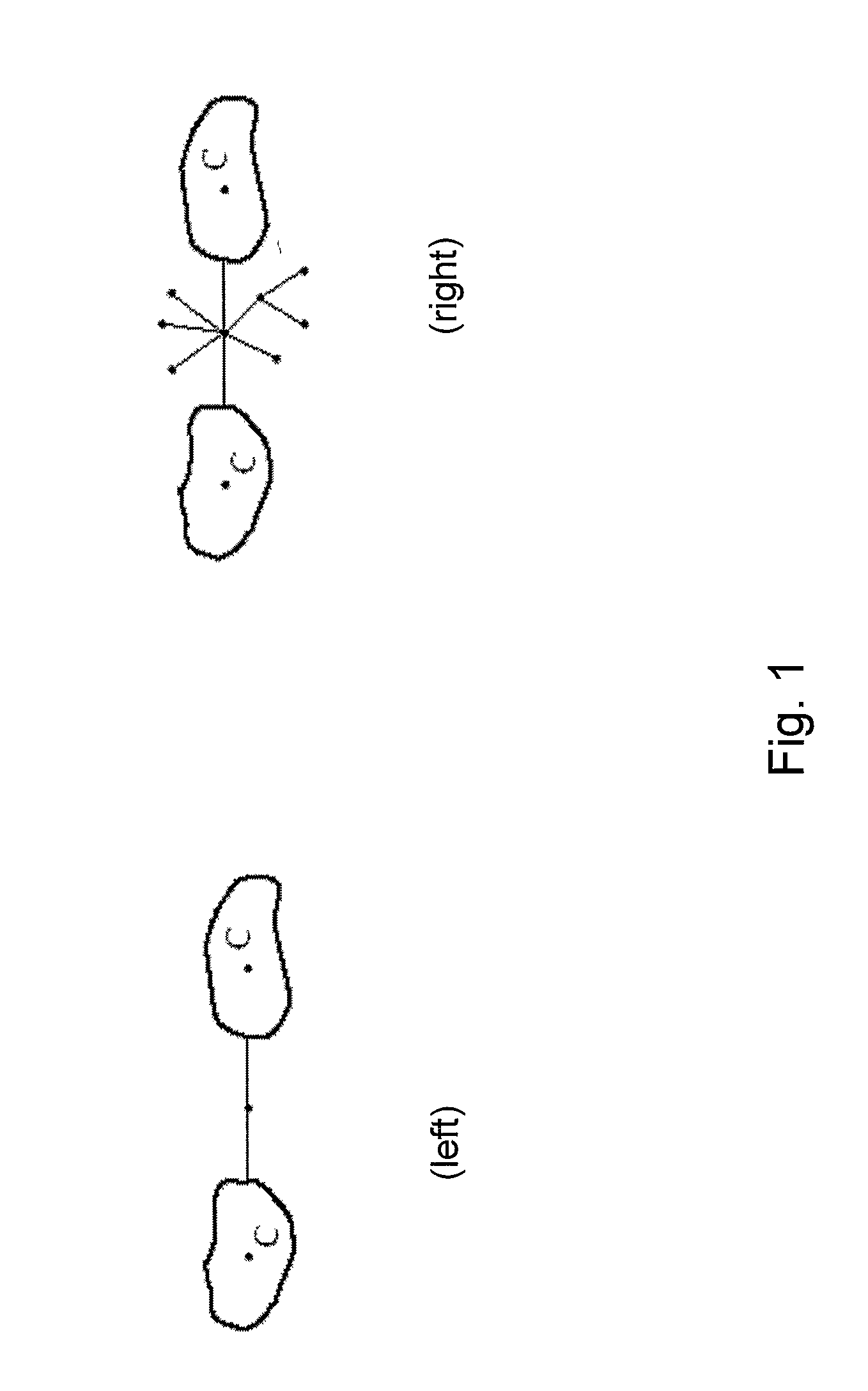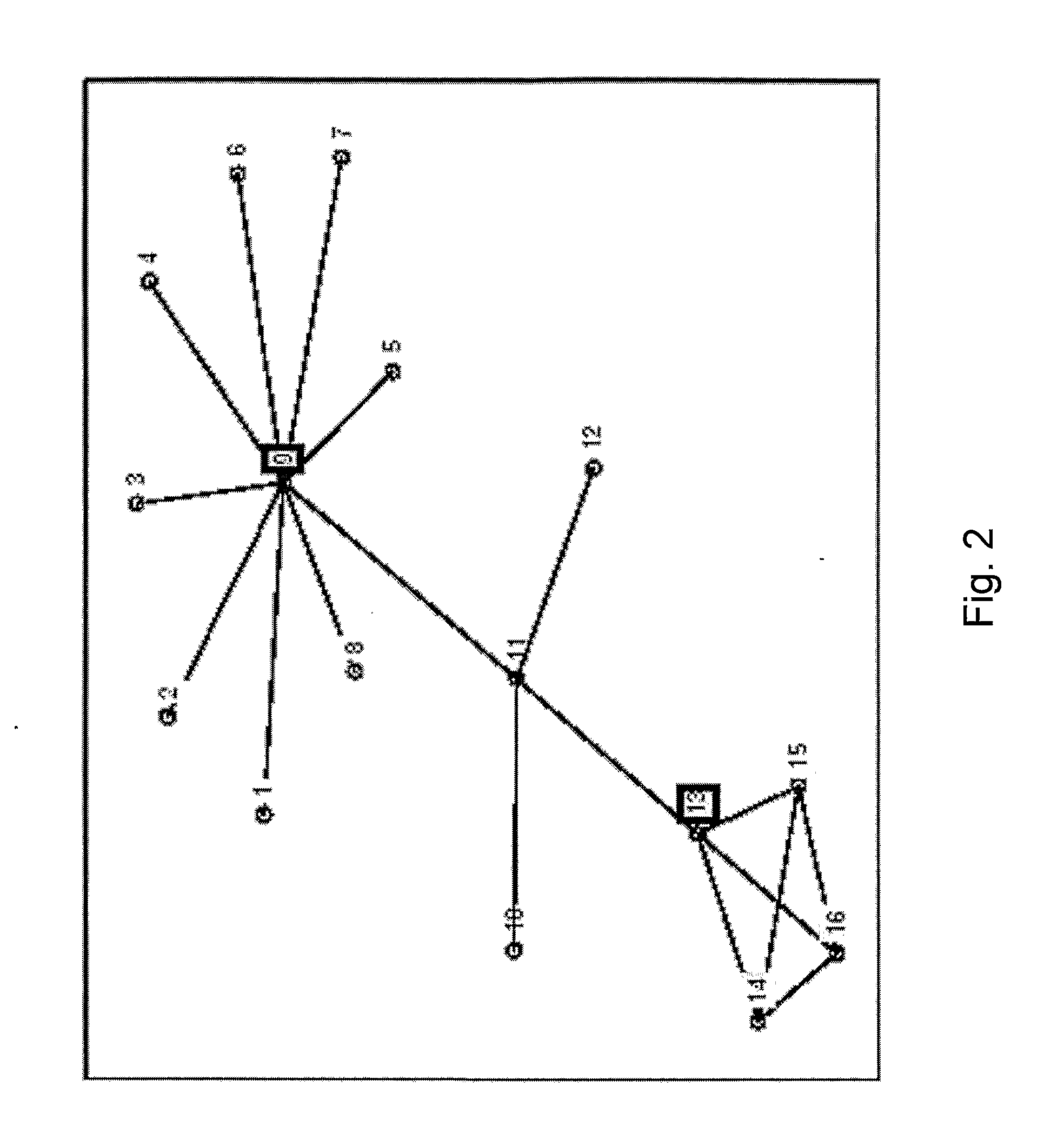Method for managing networks by analyzing connectivity
a network and connectivity technology, applied in the field of network management, can solve the problem of running the risk of nominating the centers of isolated clusters as network hubs
- Summary
- Abstract
- Description
- Claims
- Application Information
AI Technical Summary
Benefits of technology
Problems solved by technology
Method used
Image
Examples
examples
[0100] In the following is given examples of embodiment of the present invention as well as comparisons between the two rules for defining regions.
[0101]FIGS. 4, 5, and 6 show the results of the MANA research project as presented in [4]. The graphs represent a small social network, a working group of 11 persons. With the use of the presented method's different measures for link strength, EVC-based centrality indices were made for the network. The topographical visualizations show the centrality of the nodes as differences in height. In FIG. 4, link strength is measured based on the number of different media used by each node (method 2). FIG. 5 shows the graph when the link strength is based on the net amount of flow between the nodes (method 3). Finally, FIG. 6 shows the graph that is based on a mixture of the above methods for determining link strength, that is, both the number of media used and the net amount of flow (method 4).
[0102]FIG. 2 shows a simple graph with two centres....
PUM
 Login to View More
Login to View More Abstract
Description
Claims
Application Information
 Login to View More
Login to View More - R&D
- Intellectual Property
- Life Sciences
- Materials
- Tech Scout
- Unparalleled Data Quality
- Higher Quality Content
- 60% Fewer Hallucinations
Browse by: Latest US Patents, China's latest patents, Technical Efficacy Thesaurus, Application Domain, Technology Topic, Popular Technical Reports.
© 2025 PatSnap. All rights reserved.Legal|Privacy policy|Modern Slavery Act Transparency Statement|Sitemap|About US| Contact US: help@patsnap.com



